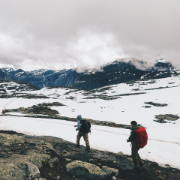Introduction
This year appears poised to be another record-breaker for Bali: the island is on track to receive 6.5 million foreign tourists, with broader estimates (including domestic visitors) suggesting the total visitor footprint may approach seven million.
Yet Bali’s modern reality, as a global tourism magnet, starkly contrasts with the romantic mythos that once drew early travellers. Historically, Bali was perceived through the lens of spiritual mysticism: lush rice terraces, intricate temple rituals, sacred monkeys and a cosmic harmony of nature and Hindu culture. Over decades, writers and travellers have described Bali as a near-utopia of culture and beauty, sustaining a perception that visitors carry with them today.
The tension now is acute: can Bali’s infrastructure, ecology, social fabric, and governance absorb tourism at this scale without compromising its deeper values? From a risk management perspective, Bali offers a compelling case study in how a tourism boom can create systemic risks that stress resilience and expose latent vulnerabilities.
The blog outlines the current risks Bali is facing, before progressing to an examination of risk mitigation strategies that may be implemented to realise a future vision for the island which harmonises economic prosperity with environmental and cultural preservation.
Risk Realities in a Viral Era
1.The Illusion Gap: Instagram vs. On-the-Ground Reality
Images of Bali circulating on social media promise serenity—sunrises over rice terraces, quiet temples shrouded in mist, paradise beaches unmarred by crowds. But reality is diverging sharply. Tourists arriving in peak zones like Kuta, Ubud, Seminyak or Canggu often find congested roads, construction noise, cramped accommodation, and beach fronts lined with hawkers.
This mismatch—between what is marketed and what is experienced—carries multiple risks. First, reputational risk: disappointed visitors are likely to share negative reviews or discourage others. Second, financial risk: when visitors encounter crowding, their satisfaction drops, which can affect repeat visitation and tourism-dependent business profitability. Businesses that invest assuming an idealized image (e.g. boutique resorts promising peace and seclusion) may overpromise and underdeliver, suffering occupancy and margin losses.
2.Extreme Weather & Flooding: Rare but Catastrophic
Though Bali has always had a rainy season and occasional flooding, climate change has created climate risks such as unpredictable and extreme weather. Heavy rains can overwhelm drainage systems, rivers overflow, slope failures occur, and coastal flooding events are more frequent. Rare but deadly floods—killing more than a dozen people in incidents—are symptomatic of deeper vulnerabilities: aging infrastructure, land use changes (deforestation or paving of catchment areas), and inadequate early warning or emergency response.
These events don’t just carry human cost; they disrupt operations. Flash floods close roads, flood hotels and damage assets; storm damage requires repair, diverting capital away from development; cancelled itineraries mean lost revenue. The media coverage of such disasters heightens reputational risk, especially among safety-conscious travellers.
3.Waste, Degradation, and Unchecked Urban Expansion
The environmental cost of mass tourism is stark in Bali. Waste generation has grown faster than the systems to manage it. Beaches accumulated with plastic, rivers choked with refuse, inappropriate dumping, unregulated landfills, and inadequate recycling are visible. Daily occurrences of illegal dumping and overflowing waste are reported in some locations.
Compounding this is rapid urban expansion – villas, resorts, cafés, and guesthouses. The infrastructure to support them is spreading into zones previously occupied by rice fields, wetlands, or forested hillsides. This can disturb hydrological cycles, exacerbate landslides, reduce natural flood buffer zones, and cause ecosystem degradation.
The long-term sustainability of Bali depends on whether natural capital can continue to support tourism. If environmental degradation accelerates, those assets erode, reducing Bali’s competitive edge.
4.Infrastructure Stress: Traffic, Noise, and the Construction Surge
Since travel restrictions eased post-COVID, the influx of visitors and the corresponding boom in resort, villa, leisure, culinary, retail investment have magnified infrastructure stress. Water supply in many parts of southern Bali is under strain and sewage networks are patched together. Roads not built for volume cause scooters, cars and foot traffic to choke in high season.
Construction, often uncoordinated, brings noise, dust, disruption. Zoning regulations may be weak or loosely enforced. Local residents at the receiving end feel the burden: traffic congestion, “cacophony” and compromised quality of life.
5.Misbehaving Tourists
Accidents involving tourists—especially those riding scooters without proper safety gear or under the influence—are frequent and contribute to safety risks. Cultural misbehavior (entering sacred sites inappropriately dressed, disrespecting norms), drunken brawls and public disturbances make headlines and often go viral.
Beyond immediate harm (injury, legal liability), such episodes inflame tensions with local communities, damage Bali’s brand globally, and may provoke regulatory backlash. Authorities are trying to counter governance risks by increasingly deploying stricter guidelines, fines, deportations—not merely to punish, but to deter.
6.Demographic Dynamics: Expatriates, Long-Stay Visitors, and Social Tension
Bali is no longer only a place for short stays. An increasing number of long-stay visitors, expatriates and digital nomads from Russia, Ukraine, and elsewhere are settling, buying property and starting businesses. While this brings economic benefits, it also introduces tensions: housing affordability issues for local residents; cultural mismatch or disregard for local norms; competition for resources; and sometimes lobbying power to reduce regulation.
Local perceptions of inequality, cultural loss, or foreign dominance can fuel social friction, possibly leading to political risk. From a risk management viewpoint, this is social risk – if local communities believe tourism is eroding rather than enriching their lives, backlash is possible.
7.Operational Disruption: Airport Power Outages
Ngurah Rai International Airport recently suffered a power outage that affected 74 flights (42 international, 32 domestic), causing delays of 30 minutes to an hour. The cause was traced to a feeder load drop in the electricity system.
Although no cancellations occurred, this kind of disruption magnifies operational risk (operational delays point to dependencies on single-point systems), reputational risk (negative press) and cost risk (compensation). Moreover, when tourist expectations of reliability are not met—flight delays, cancellations—the economic ripple (hotel bookings, restaurant reservations, transfers) cascades widely.
8.Scams, Petty Fraud, and Erosion of Trust
Finally, the risk of undermined trust is often underestimated. Tourists encountering scams such as rigged scooter deposits, shady money changers, falsified tour packages, overpriced services and hidden charges feel cheated. Even one such negative experience involving fraud risk, can have a ripple effect via reviews and social media, dissuading others. Moreover, many scams aren’t large in dollar value but high in psychological impact.
For local businesses that operate honestly, these incidents are unfair: they compete with less scrupulous actors, and their reputation may suffer by association. For authorities, visible unchecked frauds reflect governance weakness.
How can Bali, celebrated for decades as the “last paradise,” reclaim its title?
Confronting these threats requires more than patchwork fixes. Bali must adopt coherent, future-oriented tourism risk management strategies built on principles such as anticipating risks, deploying preventive and corrective measures, monitoring continuously, and adapting.
Aligning Expectations
- Encourage “slow tourism” branding: shift emphasis from volume to depth, longer stays and cultural immersion.
- Cap daily entrance flows at key sites (temple access, trails) via booking slots.
- Use dynamic pricing (peak vs off-peak) to manage demand.
- Foster narrative transparency—share real visitor feedback, infrastructure constraints, and local voices in promotional channels.
Infrastructure Resilience
- Invest in drainage, flood control, and smart runoff management, especially in catchment zones.
- Enforce building setback requirements, height limits, and land-use zoning to protect floodplains and green buffers.
- Upgrade roads, public transit, pedestrian pathways, and decentralized energy grids to reduce single point failure risk and enhance infrastructure risk management.
Waste Management
- Establish a tourism-earmarked waste levy (e.g. charge per visitor) to fund solid waste collection, recycling and waste-to-energy plants.
- Contract centralized waste processing facilities and ban open dumping strictly.
- Incentivize hotels, resorts and restaurants to adopt zero-waste practices and composting, and ban single-use plastics.
- Run awareness campaigns among both locals and tourists to instill responsible conduct.
- Partner with circular economy firms to develop plastic upcycling initiatives.
Regulatory Enforcement
- Enforce licensing requirements for tour operators, scooter rentals, guides, and restrict unauthorized business operations by foreigners.
- Strengthen tourist behavior code enforcement with on-the-spot fines, suspension of entry to attractions, and tourist education on arrival.
- Deploy mobile compliance teams (wearing body cams) in high traffic zones.
- Use data analytics: monitor visitor movements, complaint logs, social media signals, and hotspot mapping to pre-empt violations.
Managing Social Tensions
- Institute visa regimes differentiating short-stay tourists versus long-term sojourners; restrict or scrutinize certain visa types.
- Promote local employment quotas or incentives to ensure economic benefits flow to Balinese citizens.
- Facilitate mandatory cultural training programs and local liaison for long-term foreigners.
- Designate clearer geographical zones for expatriate settlements to reduce cultural friction.
Operational Resilience
- Require airport, hotels and major infrastructure to adopt redundant power supply from backup generators and microgrids.
- Stress-test transport nodes for blackout scenarios, flight rerouting and guest transfers.
- Develop compensation, insurance and communication protocols for disruptions (e.g., power outage delays).
- Simulate emergency drills involving tourism chains to reduce recovery time.
Scam Mitigation and Consumer Protection
- Publish an official guide with vetted exchangers, licensed vehicle rentals, contact hotlines etc.
- Encourage travelers to pay via digital traceable means (credit card, app) rather than cash deposits.
- Certify trustworthy local service providers (e.g. “Bali Verified”) and promote them.
- Launch mobile apps that allow tourists to flag scams in real time. This data must be fed into local enforcement.
Governance & Stakeholder Collaboration
- Monitor risk registers (reputational, financial, operational, environmental, social) and update mitigation strategies. Create a vertical within the tourism office to coordinate cross-sector risk monitoring and policy enforcement.
- Institutionalize feedback loops: periodic audits, performance metrics, public dashboards of tourist impact (waste collected, compliance rates, satisfaction indices).
- Encourage sustainable tourism and the development of non-tourism sectors such as value-added agriculture, creative industries, and digital services to mitigate the financial risk of over-reliance on mass tourism. This provides local communities with alternative, resilient income streams, fostering long-term stability.
- Engage local communities, civil society, and cultural custodians in co-designing policies to preserve legitimacy.
Applying the Enterprise Risk Management (ERM) framework to chart Bali’s transformation
To manage these complex, interconnected challenges, an Enterprise Risk Management (ERM) framework, aligned with global standards like those promoted by the Institute of Risk Management (IRM India), is essential.
Under an ERM framework, risk management in the hospitality industry proceeds through the stages: identify → assess → respond → monitor & review. The framework might map to Bali’s challenges in the following manner:
- Risk Identification
- Compiling a risk taxonomy: e.g. visitor accident liability, environmental collapse, reputational blowback, regulatory noncompliance, social unrest.
- Using scenario analysis: e.g. “What if a viral video shows mass littering at a sacred temple?” or “What if an airport outage causes mass cancellation on peak holiday?”
- Using horizon scanning (news, social media, community reporting) to detect emerging issues (e.g. new scams, demographic tensions).
- Risk Assessment
- Qualitative scoring: assign likelihood and impact for each risk (e.g. “high likelihood, medium impact” for misbehaving tourists; “low likelihood, high impact” for flood fatalities).
- Quantitative metrics where possible: e.g. percentage of flights delayed, number of deportations, waste tonnage overflow, complaint volumes.
- Risk interdependencies: e.g. a power outage may cascade into reputational damage, cancellations, and financial loss.
- Risk Mitigation
- Adopting mitigation strategies aligned with each risk domain.
- Prioritizing “first line” controls (prevention), “second line” controls (detection, enforcement) and “third line” (audit, feedback).
- Allocating budget and responsibilities for each mitigation measure; creating risk champions in tourism, environment, transport agencies.
- Risk Monitoring
- Maintaining key risk indicators (KRIs), e.g. number of violations per 1,000 tourists, airport delay hours, complaints per visitor, waste recycle rate.
- Monthly or quarterly risk review meetings among key agencies (tourism, environment, transport, local government, police).
- Periodic scenario stress tests (e.g. simulating flood + outage + social media backlash) to test resilience.
- Tracking which control works, which fails, and adapting iteratively.
Bali 2035: A Future Built on Resilience
Imagining Bali in 2035 is to imagine an island that has learned to travel lightly, both literally and metaphorically. A Bali where:
- Visitor numbers are managed, geographic demand is dispersed and seasons are balanced.
- Nature is regenerating—not just conserved: rivers run cleaner, reefs recover, and forests act as buffers.
- Infrastructure is robust: utilities scaled for peaks, redundancy built in, clean, efficient, and pleasant transport systems.
- Local communities thrive: tourism gives them economic security, but not at the cost of displacement or cultural loss. The benefits of tourism are shared; locals have a voice and choice.
- Culture remains alive: religious practices, traditional architecture and values continue to be respected; tourists adapt to local norms rather than expecting Bali to adapt to tourist expectations.
- Tourism governance institutions are responsive, data-driven, transparent and accountable. A Bali Tourism Authority or similar body oversees not just the promotion but the full sustainable lifecycle of tourism, from environmental protection and resource management to visitor behavior, building standards and emergency readiness.
Conclusion
Bali’s journey from a sacred, spiritual haven to a viral global destination is a microcosm of the risks facing the entire global tourism industry. The island’s current challenges—environmental risks, infrastructure strain, and social tension—are the direct consequences of an unmanaged, growth-first approach to tourism.
The solution to this crisis does not lie in simply banning tourists, but in instituting measures that govern tourist flow, enforce behavioural compliance, and invest aggressively in sustainable infrastructure.
Ultimately, the survival of the “last paradise” depends on replacing the myth of endless beauty with the reality of rigorous, culturally-sensitive governance.
FAQs
1.How is over tourism affecting Bali?
Overtourism is affecting Bali in the following manner –
Bali faces
(i)Reputational risk: disappointed visitors who find congested roads, construction noise and cramped accommodation are likely to share negative reviews or discourage others.
(ii) Financial risk: when visitors encounter crowding, it can affect repeat visitation and tourism-dependent business profitability.
(iii) Climate risks – overflowing rivers, slope failures, and coastal flooding disrupt operations due to road closures, damaged assets and cancelled itineraries; diverting capital away from development and causing a loss in revenue.
(iv) Social risks – Local perceptions of inequality, cultural loss, or foreign dominance fuel cultural friction and backlash.
2.How does mass tourism impact the environment in Bali?
The environmental cost of mass tourism in Bali is as follows –
- Events such as heavy rains and coastal flooding occurring frequently can overwhelm drainage systems and lead to overflowing rivers, slope failures and coastal flooding.
- These events don’t just carry human cost; they disrupt operations. Flash floods close roads, flood hotels and damage assets; storm damage requires repair, diverting capital away from development; cancelled itineraries mean lost revenue.
- Increased waste generation has accumulated beaches with plastic and choked rivers. Daily occurrences of illegal dumping and overflowing waste are reported in some locations.
- Rapid urban expansion into zones previously occupied by rice fields, wetlands, or forested hillsides can disturb hydrological cycles, exacerbate landslides, reduce natural flood buffer zones, and degrade ecosystems.
3.How can the ERM framework be used to tackle Bali’s overtourism challenge?
The ERM framework can be applied to Bali’s overtourism challenge in the following manner:
Risk Identification
- Compiling a risk taxonomy: (i)Environmental risks – ecosystem degradation (ii) Reputational risk – disappointed visitors will share negative reviews that can damage the reputation. (iii)Social risk – Local perceptions of inequality, cultural loss, or foreign dominance lead to backlash. (iv) financial risk – businesses suffer margin losses due to low occupancy when they overpromise and underdeliver.
Risk Assessment
- Assigning likelihood and impact for each risk and evaluating risk interdependencies.
Risk Mitigation
- Prioritizing the three lines of controls – (i) prevention (ii) detection, enforcement (iii) audit, feedback.
Risk Monitoring
- Maintaining key risk indicators, conducting risk review meetings among key agencies, and stress testing systems to test resilience.















